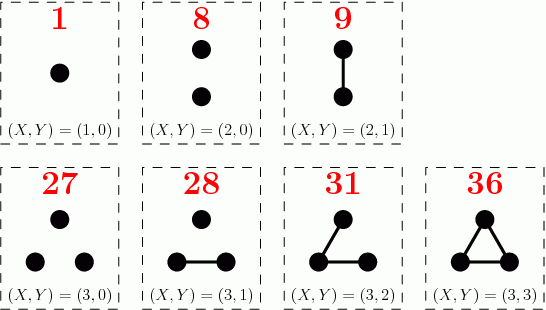Problem Statement
In the Kocurkovo village there is a shop that sells simple planar graphs. (See Notes for a definition.)
The cost of any graph with X vertices and Y edges is (X^3 + Y^2) gold coins.
Monika has N gold coins, and she wants to spend all of them on simple planar graphs.
Write a method that gets the value N and computes the minimum number of simple planar graphs Monika has to buy in order to spend exactly N gold coins. She is allowed to buy multiple graphs of the same type.
Definition
| Class: | PlanarGraphShop |
| Method: | bestCount |
| Parameters: | int |
| Returns: | int |
| Method signature: | int bestCount(int N) |
| (be sure your method is public) | |
Notes
(You can find drawings of several graphs in Example #3.)
Constraints
Examples
| ||
Returns: 1 | ||
| ||
| ||
Returns: 7 | ||
| ||
| ||
Returns: 2 | ||
| ||
| ||
Returns: 3 | ||
| ||
